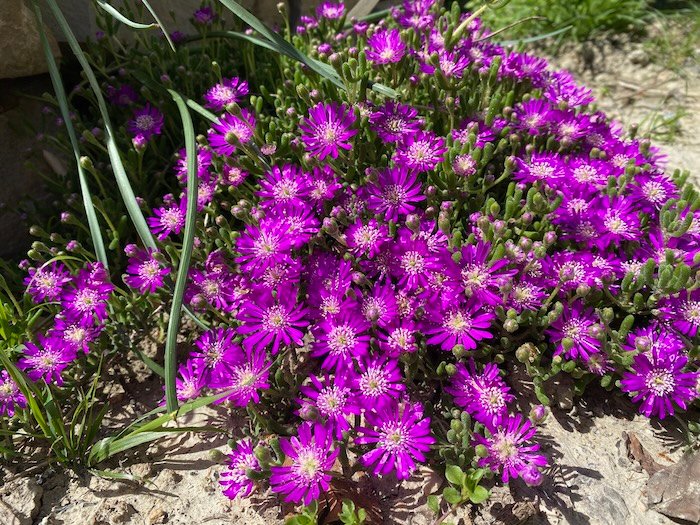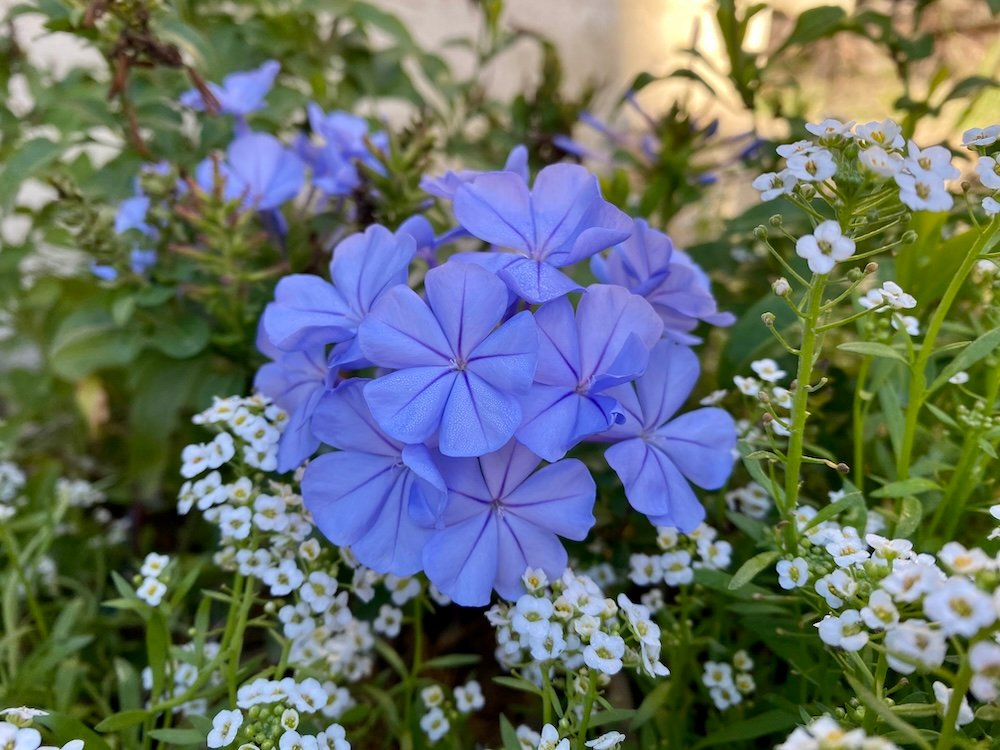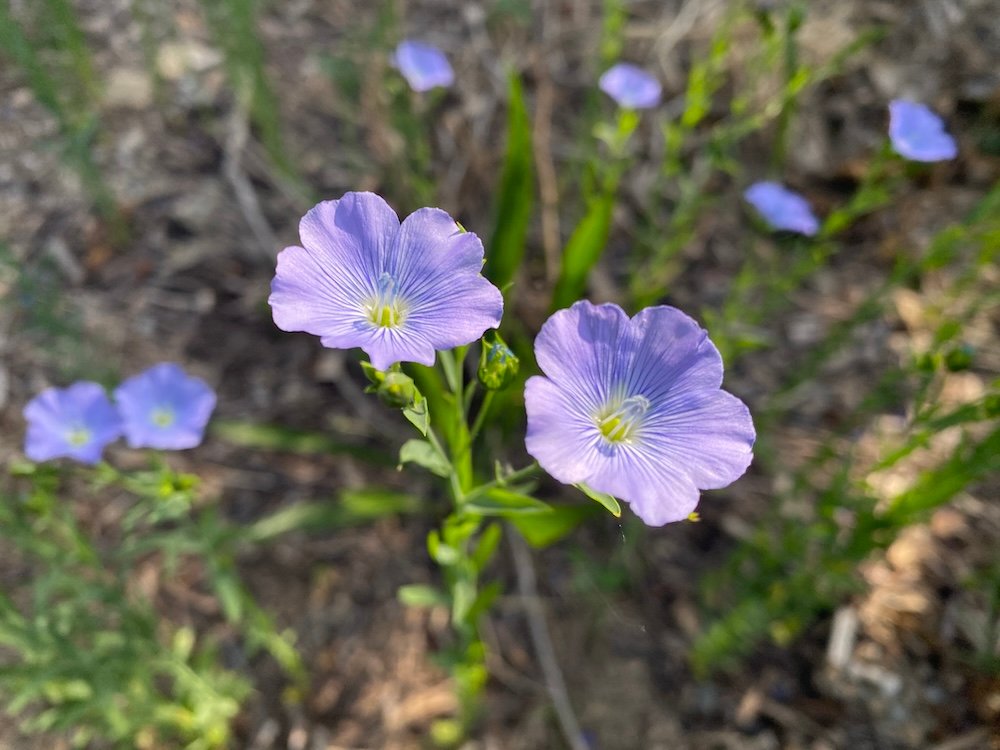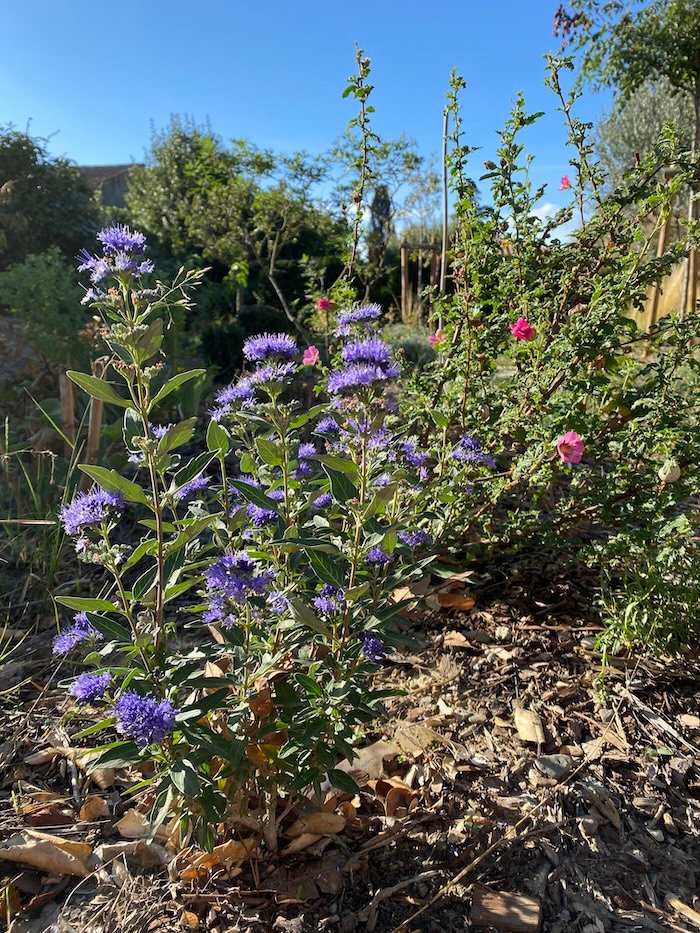Tag: flowers
-

Aizoacea & Mesembryanthemum
The Aizoaceae family is endemic to South Africa and has brought forth a multitude of mostly low-growing, spreading plants with fleshy leaves and bright flowers that work well as ground cover on dry soils in full sun. Several of its members are know as “ice plant” or “mesembryanthemum”. Interestingly, even “New Zealand Spinach” that grows…
-

Plumbago auriculata / capensis
Plumbago auriculata or capensis is a native of South Africa where it is typically part of the undergrowth under larger shrubs and bushes. It has become quite popular as a smallish climber in regions with mild winters. The foliage will be killed off by frost but a well-established plant can withstand up to -8°C, growing…
-

Linum
Very lovely little flowers, planted as green manure or as perennials: Linum usitatissimum Sown in the fall of 2022 as green manure it covered wide swathes in the garden in dainty blue flowers during May of 2023. Very pretty but not very long-lasting which is why I switched to other kinds of Linum: Linum perenne…
-

Caryopteris clandonensis
Caryopteris is one of my favorite shrubs, but for a long time I thought it was a somewhat misguided beginner’s purchase: Filippi only gives it a mere 2.5 of 6 on the drought-resistance scale. However, in this garden it has turned out to be surprisingly tough and has even survived under less than ideal circumstances.…
-

Bougainvillea spectabilis x glabra “Violet de Mèze”
Bougainvillea is one of those quintessential “Mediterranean” plants and a Must-Have to cover courtyard walls or fences in large, bright, pink, purple, red, or orange flowers all through the summer. Bougainvillea is generally not frost-hardy and since we do get some frost in this area I chose the variety “Violet de Mèze” at the yearly…
-

Lantana camara
Having known Lantana camara only as a potted plant in Switzerland, I was surprised, when one of them suddenly poked out of the barren ground in the middle of our first summer. It seemed to survive the summer heat more or less but only really came into its own and bloomed profusely from September into…